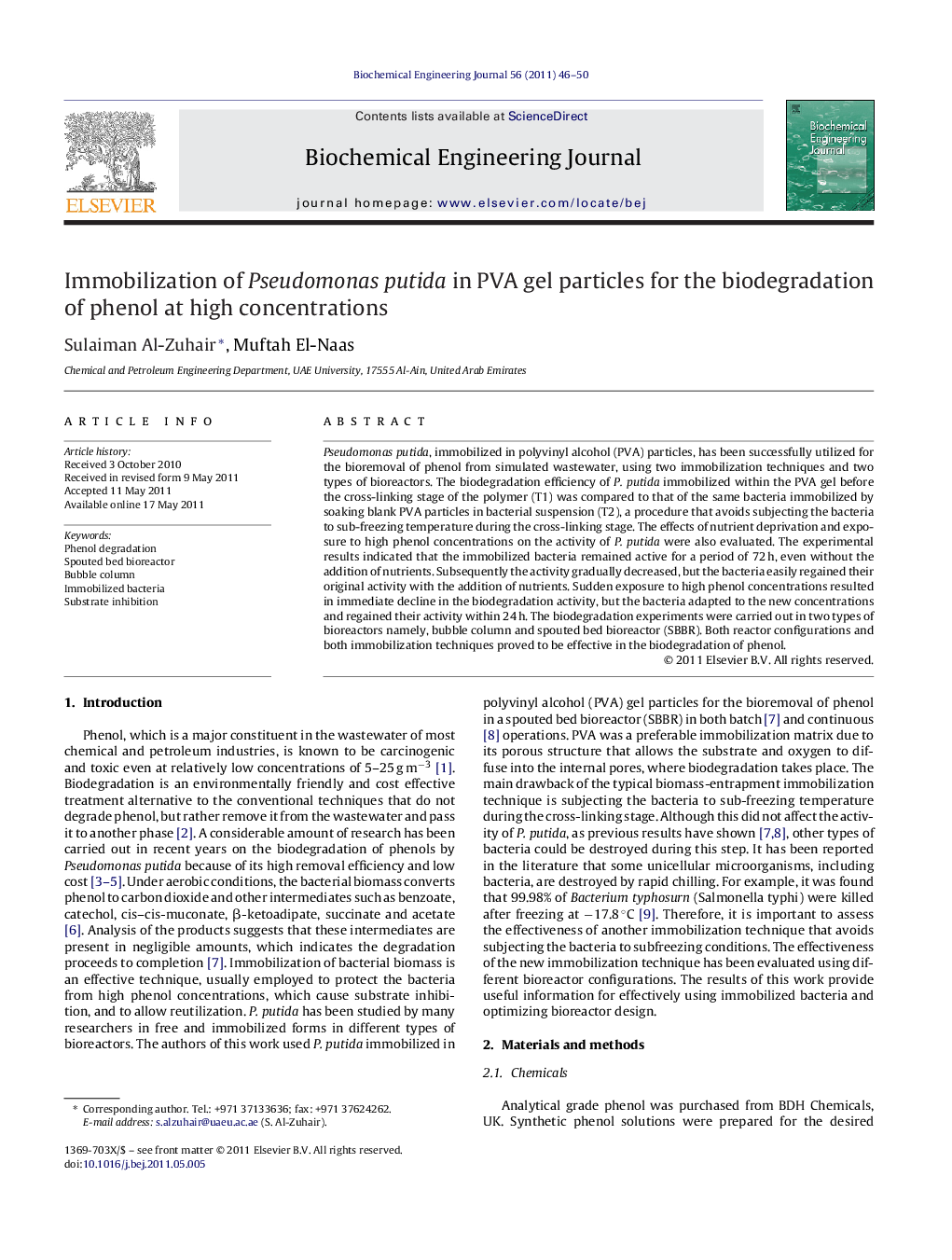| کد مقاله | کد نشریه | سال انتشار | مقاله انگلیسی | نسخه تمام متن |
|---|---|---|---|---|
| 3767 | 187 | 2011 | 5 صفحه PDF | دانلود رایگان |

Pseudomonas putida, immobilized in polyvinyl alcohol (PVA) particles, has been successfully utilized for the bioremoval of phenol from simulated wastewater, using two immobilization techniques and two types of bioreactors. The biodegradation efficiency of P. putida immobilized within the PVA gel before the cross-linking stage of the polymer (T1) was compared to that of the same bacteria immobilized by soaking blank PVA particles in bacterial suspension (T2), a procedure that avoids subjecting the bacteria to sub-freezing temperature during the cross-linking stage. The effects of nutrient deprivation and exposure to high phenol concentrations on the activity of P. putida were also evaluated. The experimental results indicated that the immobilized bacteria remained active for a period of 72 h, even without the addition of nutrients. Subsequently the activity gradually decreased, but the bacteria easily regained their original activity with the addition of nutrients. Sudden exposure to high phenol concentrations resulted in immediate decline in the biodegradation activity, but the bacteria adapted to the new concentrations and regained their activity within 24 h. The biodegradation experiments were carried out in two types of bioreactors namely, bubble column and spouted bed bioreactor (SBBR). Both reactor configurations and both immobilization techniques proved to be effective in the biodegradation of phenol.
► Two techniques were used to immobilize P. putida in PVA gel particles.
► Technique T2 avoids subjecting the bacteria to sub-freezing temperature.
► The immobilized bacteria were used to degrade phenol in two reactor configurations.
► Both immobilization techniques and both reactors proved to be effective.
► SBBR was more effective than bubble column reactor due to the better mixing.
Journal: Biochemical Engineering Journal - Volume 56, Issues 1–2, 15 September 2011, Pages 46–50